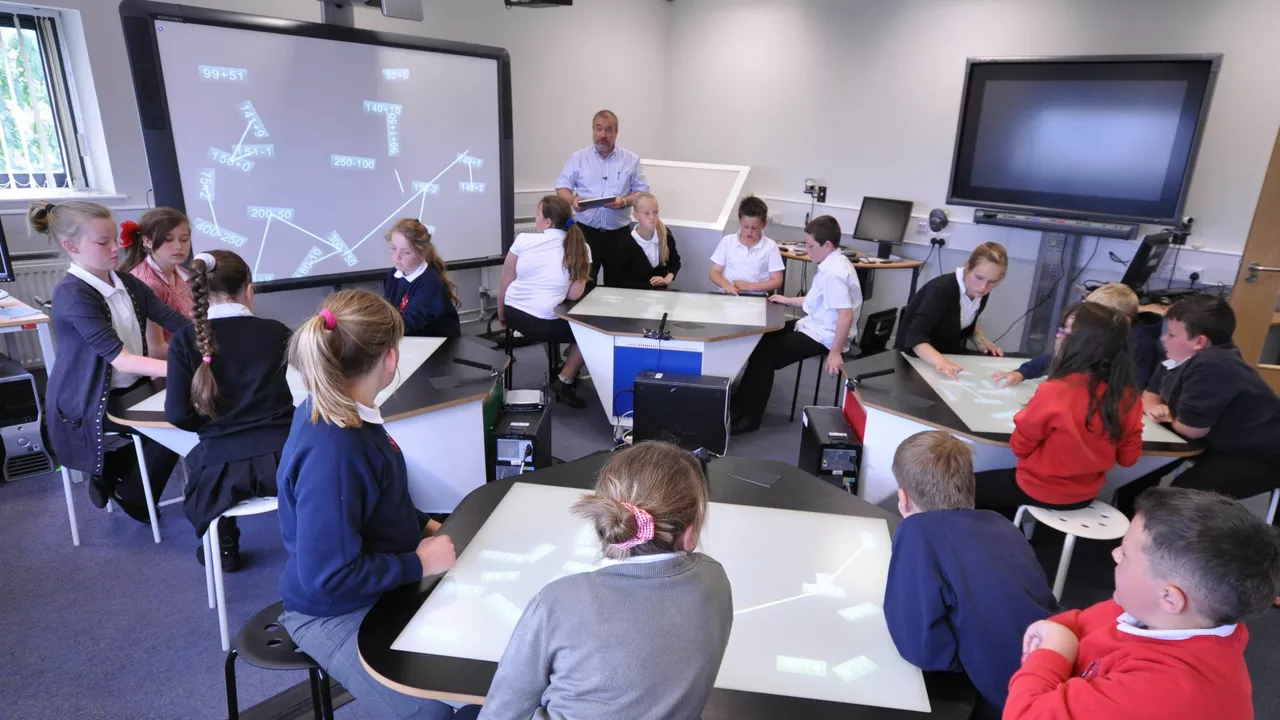What are some examples of modern classroom technology?
 Jul, 19 2023
Jul, 19 2023
Embracing the Digital Whiteboard
One of the most visible modern classroom technologies is the digital whiteboard. These interactive displays have replaced the chalkboard and paper charts, allowing teachers to show videos, display interactive lessons, and even record classroom sessions. They are touch sensitive and can be operated with a stylus or by hand. From math equations to art projects, digital whiteboards have brought a new dimension to learning by making it more visual and engaging.
Utilizing Virtual Reality and Augmented Reality
Virtual Reality (VR) and Augmented Reality (AR) are no longer confined to the realms of gaming and entertainment. These technologies are now making their way into classrooms, giving students immersive and interactive experiences that can enhance their understanding of complex topics. For instance, students can take a virtual tour of the solar system or visualize historical events in 3D. These experiences can make learning more engaging and fun, thereby increasing student participation and retention of information.
The Rise of Learning Management Systems
In today's digital age, Learning Management Systems (LMS) have become an integral part of modern classrooms. LMS platforms like Canvas, Blackboard, and Google Classroom offer a centralized location for course content, grading, and communication between teachers and students. They also provide analytics and tracking tools to monitor student's progress and engagement. With LMS, learning has become more streamlined and accessible, making it easier for students to learn at their own pace and for teachers to provide personalized feedback.
Adopting Artificial Intelligence Tools
Artificial Intelligence (AI) is another emerging technology that's making its presence felt in modern classrooms. AI-powered tools like intelligent tutoring systems and adaptive learning software can provide personalized learning experiences for students, tailoring content and instructions based on their individual needs and progress. AI can also automate administrative tasks like grading and attendance, freeing up more time for teachers to focus on instruction and student engagement.
Benefits of Biometric Technology
Biometric technology, although controversial, is finding its place in modern classrooms for security, attendance tracking, and even lunch payments. Facial recognition systems can ensure only authorized individuals enter the school premises, while fingerprint scanners can make attendance tracking more efficient. While there are ongoing debates about privacy and data security, when handled responsibly, biometric technology can enhance safety and streamline administrative tasks in schools.
Digital Textbooks and E-Learning Resources
Gone are the days of heavy backpacks filled with textbooks. With the advent of digital textbooks and e-learning resources, students can access a wealth of information right at their fingertips. Digital resources are often interactive, updated regularly, and more engaging than traditional textbooks. They also offer accessibility features like text-to-speech for students who may have reading difficulties. Plus, they're environmentally friendly, reducing the need for paper and printing.
Interactive Projectors and Document Cameras
Interactive projectors and document cameras are other examples of modern classroom technology. Interactive projectors can turn any surface into an interactive display, while document cameras can display real-time images of documents, 3D objects, and experiments on a large screen. These technologies can make lessons more engaging and interactive, encouraging student participation and collaboration.
Student Response Systems for Immediate Feedback
Student Response Systems (SRS), often called "clickers", are devices that allow students to respond to questions in real-time during a lecture or presentation. The responses are instantly displayed on the teacher's computer or interactive whiteboard, providing immediate feedback. This technology can encourage student participation, assess understanding of the material, and adapt lessons based on student responses. SRS can make learning more interactive and enjoyable, while also providing valuable data for teachers.